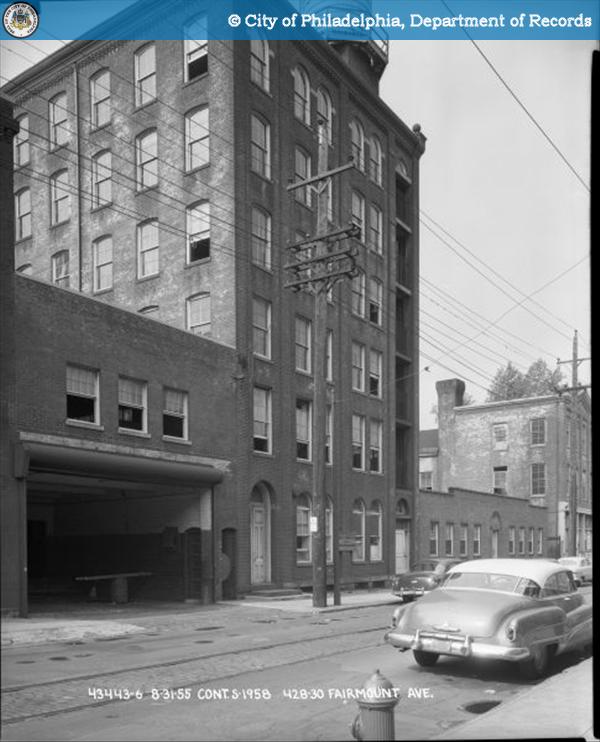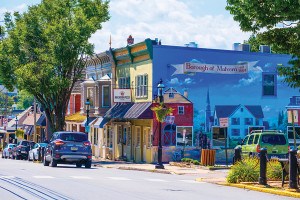Neighbors Says Yes to Apartments in Historic Trans Atlantic Warehouse

A 1955 photo of the Trans Atlantic Company warehouse at Fourth and Fairmount. Via phillyhistory.org
Members of the Zoning Committee of the Northern Liberties Neighbors Association, who met on May 19th, liked the tweaks that developer Greg Hill made to his proposed development at 420-42 Fairmount Avenue and 613-31 N. 5th Street. But many would rather there be a parking space for every dwelling in the 25 town homes and 41 (down from 48) apartments.
“Nobody has just one car any more; they all have two cars,” said one neighbor at the meeting. “When this [project] happens, and it’s gonna be overrun with cars, there’s no plan for dealing with them and it’ll destroy the character of the community.”
Zoning Committee Chair Larry Freedman, however, pointed out that the City Planning Commission was just fine with the roughly 1:2 parking ratio originally proposed, and that the nearly 1:3 ratio the developer achieved after making some changes to the apartment building and reconfiguring some of the homes was an improvement. According to the commission, the size of most of the apartments in the historic former Trans Atlantic Co. warehouse would appeal more to carless residents.
Zoning Committee member Tim McDonald pointed out that the 2012 zoning code was rewritten specifically to promote transit-oriented development: “It may take a generation for that to happen, but that’s where the city is going.”
While some residents in attendance questioned the wisdom of the Planning Commission, Freedman advised them that this would likely be the best they could get on parking. And the rest of the changes made by the developer and ISA Studio Architects more than met with the neighbors’ and the committee’s approval – save one: Committee members still felt the commercial space on the National Register-listed warehouse building’s first floor could be bigger, and they recommended removing two more first-floor units in order to increase the size of the commercial space.
All the other changes made by the architects matched what the committee had recommended on the project’s previous trip through the review process. A series of overhangs on the homes on Wallace Street were removed and the fourth floors set back to maintain a 38-foot-high cornice line on the street. The homes’ facades were also made more varied through the use of wood accents of varying sizes.
Committee members particularly liked the sensitive handling of the warehouse building, all of which will be reused in this project save for a bridge over Wallace Street. When some neighbors argued that the bridge should be preserved too, one Zoning Committee member pointed out that the property across Wallace to which it connects is no longer owned by the same entity.
The developer also agreed to install photoelectric pedestrian-scaled lighting on the houses facing 5th and Wallace streets, as the committee had previously recommended.
Ultimately, one committee member noted, the parking qualms pale in comparison to the benefits this project offers. “Is this a better thing than what’s there? I think so,” he said.
The other committee members agreed, voting unanimously to approve the project as presented with the proviso that the developers increase the commercial space by removing two more first-floor apartments and meet with the NLNA Urban Design Committee to address design issues the committee previously raised.


